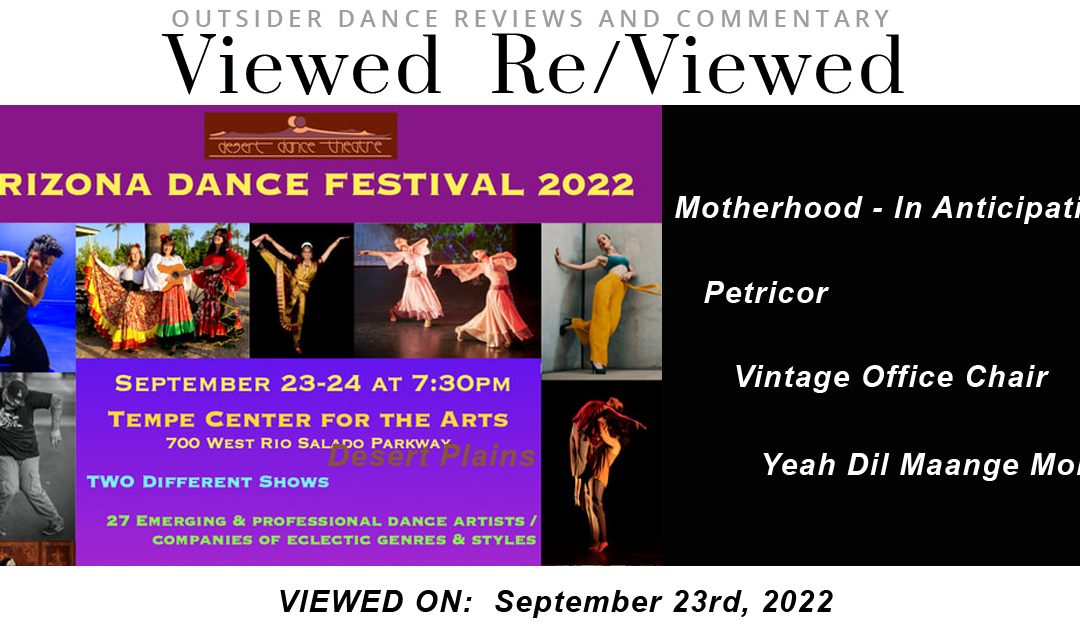Company: Archana Alagiri
Choreographer: Archana Alagiri
Performer: Archana Alagiri
The Valley is fortunate to have several accomplished artists and teachers of classic Indian dance. When seen it its full glory, it is a blaze of colorful costumes and an amazing demonstration of ultra-precise movement, particularly of the hands, arms, head and feet, with fingers held in elegant but impossible contortions, and a correspondingly complex array of very specific and visible emotions that wash over the performer’s face. Like Japanese kabuki, it is physical storytelling with traditional origins that are obscure to anyone not steeped in the culture. As a westerner, I have watched these performances with curiosity and a certain appreciation for the obvious skill being demonstrated by a masterful Indian dancer, but beyond the beautiful costumes and perhaps a hint in the title, I have had little or no understanding of what I was actually seeing.
So, kudos to Archana Alagiri for inviting the audience in to her performance of Motherhood – In Anticipation. In a very real gesture of cross-cultural connection, she dispensed with the purist approach and provided projected references to the context for each movement. On the large video screen behind her were titles that described what was being portrayed, like Expectant Mother, Toddler, First Steps, First Fall and Consolation. These literal cues, rather than dumbing down the performance and making it simplistic, allowed the audience to understand what was being portrayed in the moment and appreciate the universality of these very human and touching situations. If classical Indian dance is indeed a form of storytelling, there was now a thread that we could follow for the narrative unfolding in this highly stylized reenactment and a connection to the corresponding emotions portrayed in her fluid expressions.
As westerners, we will probably never understand the impossibly articulated finger and hand positions that appear so effortless for female Indian dancers or the prescribed positions of the feet or the myriad other nuances of this traditional form. But Alagiri, while retaining the strict perfection of each movement as required by that classical tradition, took us beyond being merely intrigued with the visual spectacle. By acknowledging her audience and providing English references, she brought us to a place of understanding and appreciation for the heart and purpose of her performance – exploring that most universal of human conditions, Motherhood.
Viewed Re/Viewed


Recent Comments